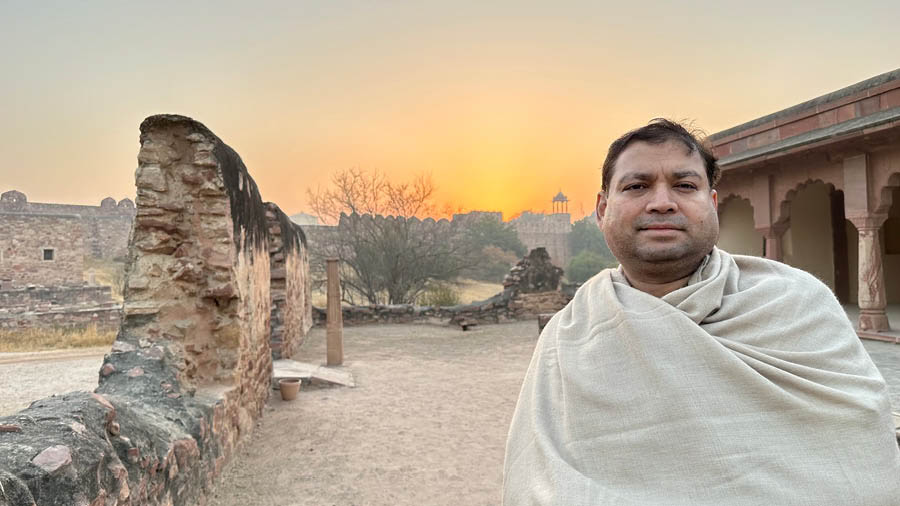I was in my neck of the woods recently. At Nagaur, about 100 kilometres from my native place, Sujangarh in Rajasthan, to be precise. The occasion: the Sacred Spirit Festival, held at the Nagaur fort, which belongs to Maharaja Gaj Singh, better known as Bapji, the scion of the erstwhile royal family of Jodhpur.
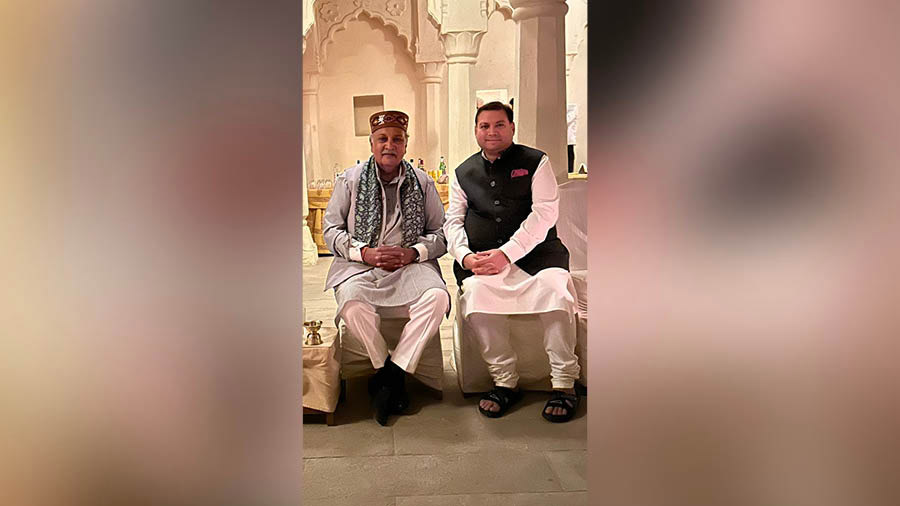
The author with Maharaja Gaj Singh Courtesy: Sundeep Bhutoria
The family trust maintains the fort. I was amazed at how much infrastructure has to be put in place each year for the three days of the festival, which I was attending for the third time. The event started 17 years ago, and barring two Covid-induced interruptions, has been held every year.
Among ticketed events in India, it does not get much more exclusive than this festival. Only a handful of seats are available to outsiders after providing tickets to the residents of the fort, who too are not many, occupying only about 30 rooms plus luxury tents set up during the event.
I could almost count on my hand the number of Indian nationals present, most of them personally invited by Bapji himself. Bapji’s daughter, Princess Shivranjani Rajye, Alexandra de Cadaval and Rahul Raichand are the festival directors. Suhel Seth, along with his wife Lakshmi Menon and Montek Singh Ahluwalia were among the few Indian guests this year.

The author flanked by Suhel Seth and his wife Lakshmi Menon Courtesy: Sundeep Bhutoria
Global audience, Rajasthani luxury
The number of foreign guests in attendance and the many countries they came from is a pointer to the attraction of Sufism, more so because Nagaur is not well-connected by air or rail. It is the charm of the festival that draws connoisseurs from many parts of the globe.
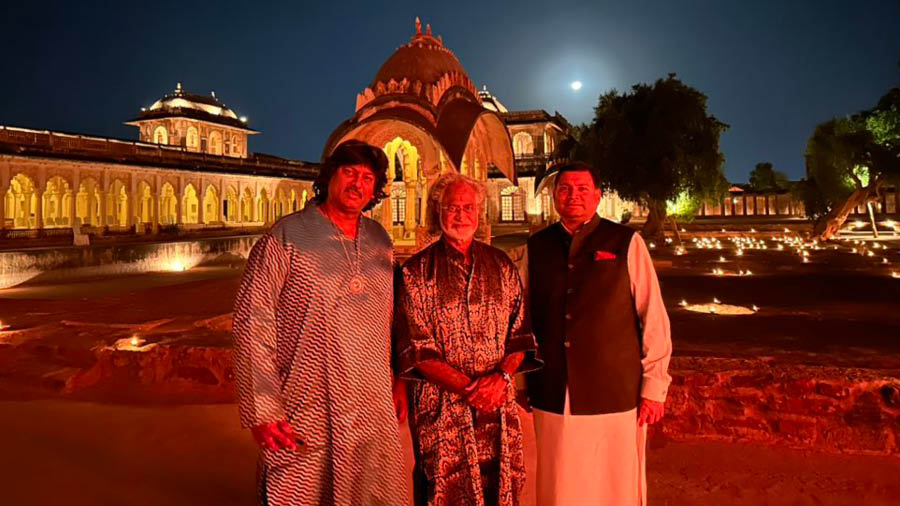
The author with musicians Pandit Vishwa Mohan Bhatt (centre) and Salil Bhatt Courtesy: Sundeep Bhutoria
The musicians also hail from across the world, including several parts of Rajasthan. The performances started by the time one had finished one’s morning cup of tea under the Peelu Tree at Char Bagh and continued well into the night with the last performance starting at 11.30pm at Deepak Mahal.
Whether it was the Peelu Tree at Char Bagh, Deepak Mahal or the Bakhat Singh Palace courtyard, the settings for the performances were picture perfect. As were the arrangements for the guests. The cocktail zones under the moonlight, done up with impeccable taste for guests to soak in the ambience, bear special mention. To top it all, everything was suffused with khamma ghani, the legendary politeness and grace of Jodhpur.
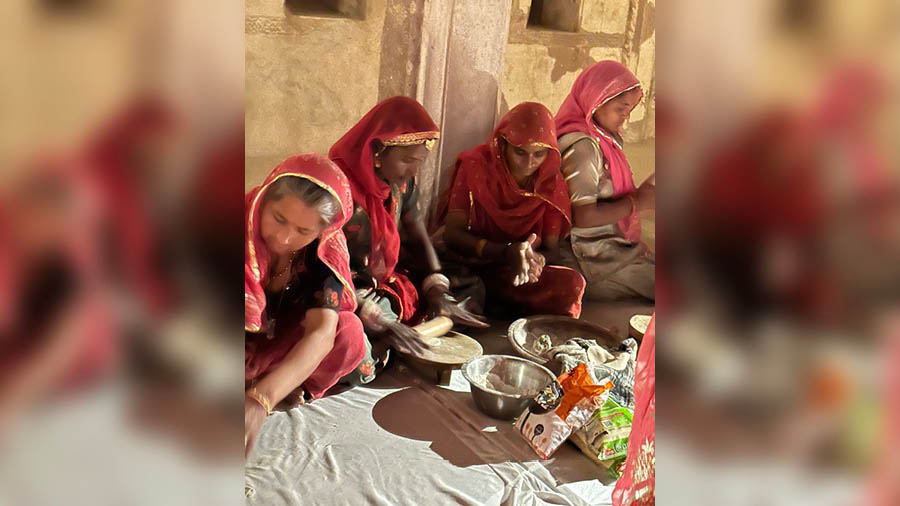
Local women preparing food at the festival Courtesy: Sundeep Bhutoria
The tickets for the three days were priced at about Rs 5 lakhs. To my pleasant surprise, the many guests I interacted with said they were more than happy to pay that much and travel halfway around the globe for the experience.
Architectural wonder
For many guests, staying at the Nagaur fort was in itself an absolute treat. A district in its modern avatar, Nagaur is a slice of history tucked into the very heart of Rajasthan.
The Nagaur fort complex, spread over 36 acres and known as Ahichhatragarh or ‘the cobra-hooded’ fort, owes its origin to the 4th century Nagvanshi kings who had originally raised it as a mud fort. It was modified by various rulers over the centuries, from the Pratihara Rajputs to the Ghaznavids to the Khans to the Mughals. In 1119 AD, Mohammad Bahalin, governor of Punjab, turned the ancient mud fort into a stone structure. Sufi Hamid Al-din Chisti established his khannaqah (school) in Nagaur in 1274 AD, turning it into a centre of pilgrimage.
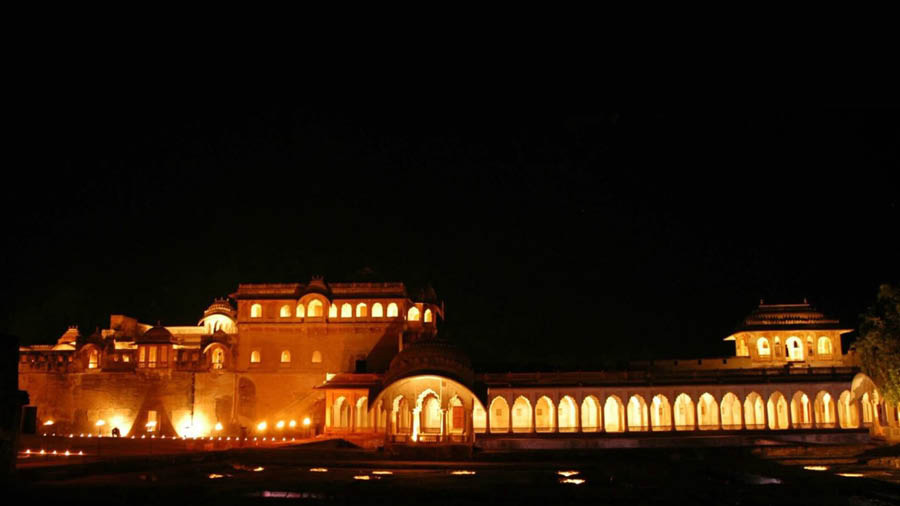
The Nagaur fort complex is spread over 36 acres Rajasthan Tourism
With four major palaces and 64 other sandstone buildings, Nagaur is home to some of the finest murals of Marwar. Its wall paintings, murals, inlaid mirror work, unique water system, pools, fountains, gardens, tombs and architectural planning are among the finest examples of Rajput-Mughal style of architecture.
The gardens and water palaces of Rajasthan have their own cachet and stand out as architectural marvels. The Garden Palace of Nagaur, built within the Ahichhatragarh city fort, is a hallmark of historical richness, craftsmanship and architectural splendour that has weathered the ravages of time and neglect. On the early caravan or trade route to Multan and Sindh, Nagaur was at the confluence of various cultural influences, where trade and commerce walked hand in hand with spiritualism (sufism), art, culture and politics.
Building and preserving
Much of the fort’s current appearance can be attributed to Maharaja Bakhat Singh (1724-51), who built several impressive structures during his rule. Among them is the magnificent Garden Palace in the Persian char bagh (quartet) style for leisure and pleasure. It is a square area divided into four equal parts connected by water channels with four pavilions at the centre. The Hadi Rani Mahal is a three-storeyed palace that provided living quarters to the queens. It retains extensive wall paintings. The murals, jaalis, cusped arches, foliate motifs, ornate stonework and jharokhas reflect the residential and the feminine character of the place.
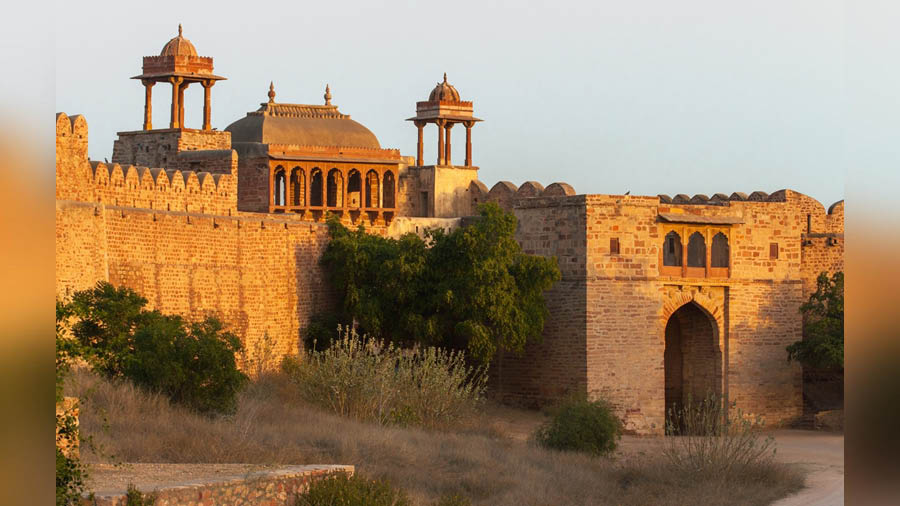
Much of the fort’s current appearance can be attributed to Maharaja Bakhat Singh (1724-51), who built several impressive structures during his rule Shutterstock
The second palace, Bakhat Singh Mahal, is the tallest palace in the complex. The ground-floor hall is decorated with floral motifs that have unfortunately become obscured with time. This palace was a diwan khana or a private audience hall. Zenanas or screened upper galleries allowed women to witness court ceremonials.
The two-storeyed third palace, Abha Mahal, is the largest in the fort complex. It is adorned with internal and external painted designs. This was a place for unwinding. Some historians call it Abhay Mahal, others link its name to ab-o-hawa (water and wind). Elaborate waterworks, air-cooling systems and hamams (baths) give it a somewhat masculine character.
The three buildings are connected by courtyards and pools. On the south-west is another apartment and garden called Deepak Mahal, which has many lamp niches. The figurative subjects and decorative designs of the structures provide a wealth of historical information on local life and culture of its times.
The other attractions at Nagaur include a Krishna Temple, Akbar’s Palace, Baaradari and a Sheesh Mahal, which is a large domed hall surrounded by colonnaded verandahs on three sides and an enclosed reflecting pool on the fourth. The paintings and mirror work represent courtly life in 18th century Rajasthan and beautiful representations of traditional Rajasthani plastering techniques like araish abound. It is clear that Nagaur was a flourishing and influential artistic centre during the second quarter of the 18th century.
Having faced years of neglect, conservation work was taken up in earnest by the Mehrangarh Museum Trust in the 1980s and continues till date.
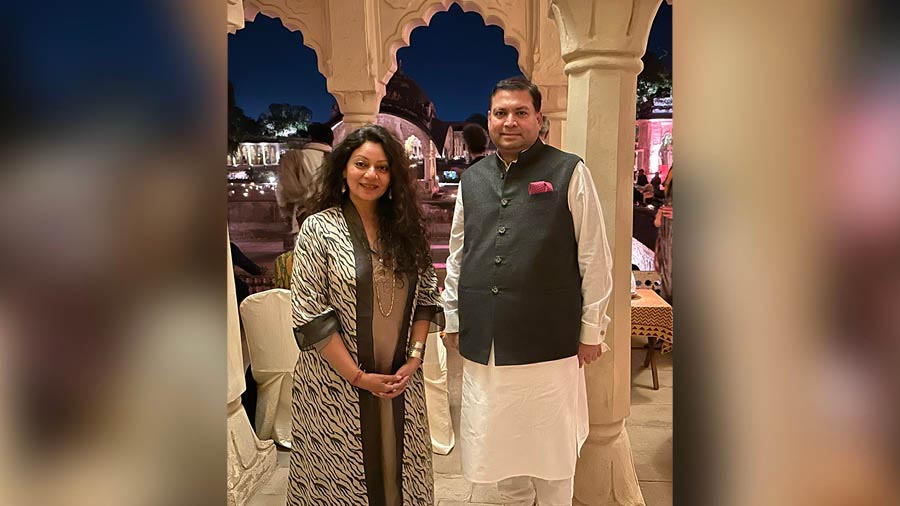
The author with Princess Shivranjani Rajye Courtesy: Sundeep Bhutoria
On the sidelines of the festival, I met Bapji over lunch. He is known for opening the doors to development through his various initiatives, and we discussed the various social projects he is pursuing in Rajasthan. I also had an interaction with Princess Shivranjani. Yet another interaction was with Divya Bhatia, the director of the Rajasthan International Folk Festival in Jodhpur, which I am yet to attend. Watch this space for my experiences at that other famous festival in Rajasthan and elsewhere in India.
